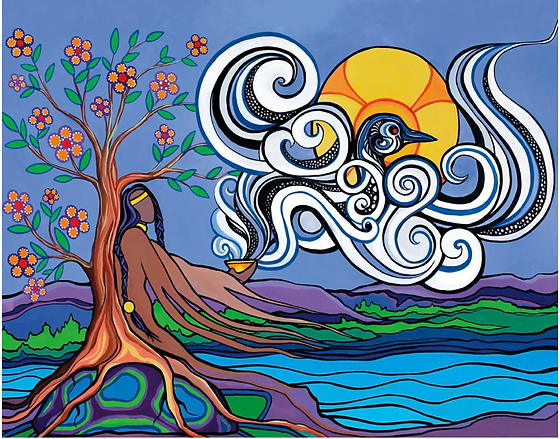Planting for
the Planet
Goal 3: Incorporate Indigenous Values
An important perspective held by Indigenous Peoples it the view that land is not here for our financial gain or to alter for our enjoyment (such as through planting invasive species). Rather, the view is held that the land is sacred and thus must remain whole for future generations.
(Joseph, 2015)
We adopt this value in our project, and it underlies the change we hope to bring forth with this website, such that we should not alter the environment and species community and instead attempt to restore and enhance the native species present.
Land Statement
To begin, let us acknowledge that Queen’s University is situated on traditional Anishinaabe (Ah- nish-in-ah-bay) and Haudenosaunee (Ho-den-o-show-nee) territory. We are grateful to be able to study, learn and educate on these lands. It is also to acknowledge this territory’s significance for the Indigenous Peoples who lived, and continue to live, upon it and whose practices and spiritualities were tied to the land and continue to develop in relationship to the territory and its other inhabitants today.
This statement has been adapted from Queen's University Office of Indigenous Initiatives
(Queen's University, n.d.)
"Prayers by the Lake"
by Pam Cailloux
Pam is a Canadian
Metis Artist from
Chibougamau, Quebec.

Click to return to "About Us"
References
Gifts, M. I. C. (n.d.). “Prayers By The Lake” - Pam Cailloux. Made in Canada Gifts. Retrieved March 12, 2024, from https://www.madeincanadagifts.ca/collections/indigenous-art-prints-canadian-matted-artists-first-nations/products/prayers-by-the-lake-pam-cailloux-canadian-limited-edition-print
Joseph, B. (2015, December 2). Indigenous Peoples and the Environment. Ictinc.ca. https://www.ictinc.ca/blog/indigenous-peoples-and-the-environment
Queen's University. (n.d.). Indigenous Land Acknowledgement . Www.queensu.ca. https://www.queensu.ca/indigenous/ways-knowing/land-acknowledgement#:~:text=%22I%20am%20grateful%20to%20live